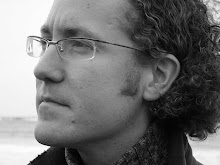Richard Wiseman, the magician, psychologist, science communicator and author of Quirkology: the Curious Science of Everyday Lives asked me and John Henderson to measure viewers’ eye movements whilst they watched one of his magic tricks. The Colour Changing Card Trick is a very clever use of a perceptual phenomenon known as ‘inattentional blindness’. Check out the trick before reading on:
Inattentional Blindness is an absence of awareness of some detail or event in the visual world due to a failure to attend to it. This absence can often be strikingly large (as in Richard’s card trick) or, most famously in Simons & Chabris (1999) ‘Gorillas in our Midst' experiment. In the Simons & Chabris experiment subjects were told to watch a video of two teams, one wearing white, the other wearing black pass basketballs within their teams. Half of the subjects were told to count the number or passes made by the team wearing white. The other half were told to count the passes made by the team wearing black. Half way through the video a man wearing a black Gorilla suit walked through the scene, stopped in the middle of the scene, waved at the camera and then walked out of shot. When asked after the video if they had noticed anything odd during the video, the majority of subjects failed to report the Gorilla! The probability of noticing the Gorilla was greater when the subjects had been instructed to attend to the black team (58% detection) compared with the white team (27%) indicating that the task had biased the subjects attention either towards black or white objects. The subject’s selective attention shapes the details of the scene that reach the level of conscious awareness and subsequent memory but, importantly the subject is not aware that their awareness is in any way partial. This mismatch between what the subject think they see and what they actually see is what creates the shock at the end of the Gorilla experiment or the Colour Changing Card Trick.
The Colour Changing Card Trick uses a simple card trick to distract viewer attention from what is actually going on, namely the changing of both presenters’ T-shirts, the backdrop, and the table cloth. Such misdirection is a classic tool of any magic performance. All changes are made off camera when the continuous camera shot zooms in to a close-up. This removes the actual change itself from view, leaving only the result. In order for viewers to notice the change they must have previously attended to the object that has changed and have sufficient memory of that object to notice that its current form is different. By measuring viewer eye movements during the trick we can see whether viewers attend to the objects before the changes and whether there is any increase in attention to the objects after the change. Such an increase may indicate the precise moment at which the viewer notices the change.
The results are still being analysed but for now Richard has posted a video illustrating the eye movements of 9 subjects whilst they watched the trick (5 men and 4 women). The one red spot is the gaze location of a woman who detected the Female presenter’s T-shirt change.
This video was created using my own Gazeatron software.
As can be clearly seen from the video most viewers look in roughly the same parts of the scene at the same time. This close control over where viewers are looking is exactly the intention of the magician. By ensuring such systematic viewing the magician can hide changes/manipulations in the unattended spaces. It is only once one of the viewers notices the change (the red spot) that their gaze location begins to differ from everyone else’s.
If you want to know more about the psychology of misdirection and its relationship to eye movements check out Gustav Kuhn’s research at the




2 comments:
Interesting. Ain't a psychologist. Since a month I become to be interested for cinema theory and visual perception.
Hello! Thank you SO much for all the detail, I've given you kudos in my own blog entry here! www.podblack.wordpress.com
Post a Comment